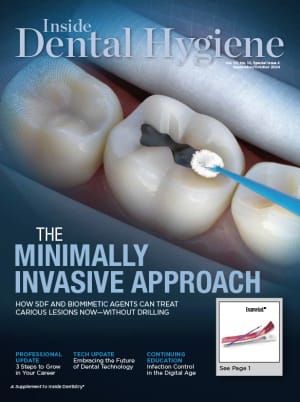CHICAGO, Oct. 30, 2014 /PRNewswire-USNewswire/ -- The American Dental Association (ADA) is encouraged that preliminary data presented at the "Innovations in the Prevention and Treatment of Early Childhood Caries" conference on October 23 shows a downward trend in early childhood caries (cavities) in the United States and indicates progress in ensuring that kids are getting needed dental treatment.
"This preliminary analysis may indicate a promising trend. We are encouraged that it shows far less untreated tooth decay in children, with dentists providing needed treatment," says ADA President Dr. Maxine Feinberg. "Dental Medicaid visits have been increasing and more kids are seeing the dentist. Now, we must stay the course, building on that momentum to continue making an impact for children, and expand efforts to prevent dental disease before it starts."
Preliminary unpublished data shared by Centers for Disease Control's Dr. Bruce Dye suggests a decade-long trend of increased treatment of caries (cavities) in preschool children, suggesting a clear shift in untreated dental disease in the U.S. among 2- to 5-year olds toward more restored dental surfaces for all 20 primary teeth. The analysis is based on a review of 2011-2012 National Health and Nutrition Examination Survey (NHANES) longitudinal health data from the CDC and a representative sample of the U.S. population. It was presented in advance of expected CDC publication of the full range of data covering 2011 through 2014 next year and should be viewed as a preliminary analysis.
While we await the full data analysis, continuing to align and promote efforts that contribute to reducing untreated dental disease is critical. Through the ADA's Action for Dental Health, dentists across the country are delivering dental health education and disease prevention to communities, fighting for increased dental health protections under Medicaid and providing care now to people suffering from untreated dental disease. For example, according to research from ADA's Health Policy Institute, from 2000 to 2010 dental care utilization among low-income children increased in 47 states and the continued expansion was primarily due to Medicaid and State Children's Health Insurance Programs (SCHIP), which mandate dental benefits for children. Also, ADA's Community Dental Health Coordinators (CDHCs) are helping people connect to dental public health resources in their communities and dentists who can provide needed treatment.
"Dental access, prevention and care initiatives are making a positive difference in dental health for patients and the ADA is committed to continuing to support and promote increased alignment of efforts and partnering to better fuel the momentum," Dr. Feinberg said.
